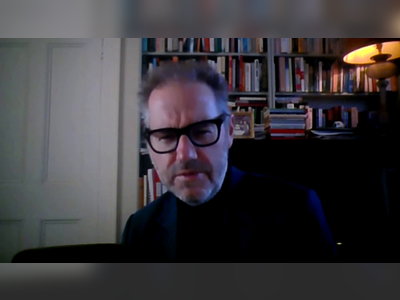The Problem With Suggesting Exercise For Depression
Terri Cheney, a 59-year-old writer from Beverly Hills, has lived with bipolar disorder for the majority of her life. When a wave of depression hits ― a hallmark symptom of the mental health condition ― she says she feels as if she’s got a bad case of the flu. She wishes she could get up the energy to exercise, but on the days when even shuffling into the kitchen feels difficult, trying to endure an actual workout seems unbearable.
“There are times when I simply can’t move,“ said Cheney, author of “Manic: A Memoir.” “The exercise advice is what makes me craziest. You know it’s good for you, but it’s a little fraught with danger. If you try and fail, you might feel worse.”
You don’t have to Google long to learn that exercise is a go-to, expert-backed remedy for managing depression. In fact, physical activity is so beneficial that research shows it can be as effective as antidepressants for some patients ― or, at the very least, it improves symptoms if you’re on medication. A new study published in August also found that hot yoga was associated with reduced depressive symptoms, anxiety and hopelessness.
This boost is likely because exercise releases mood-regulating endorphins and serotonin, as well as prompts the growth of new brain cells and blood vessels that bring more oxygen into your body, said depression researcher Peter J. Carek, professor and chair in the department of community health and family medicine at the University of Florida.
But despite experts’ enthusiasm for the potential of exercise, there’s often little recognition that the very thing that would make you feel better is really, really hard when you’re depressed. Worse, it may exacerbate the hopeless feeling that comes with depression.
In a small 2017 study in an outpatient mental health clinic, 84% of people acknowledged that physical activity usually helped them feel better ― and the majority wanted to be active ― but 52% blamed their mood as the reason they got less than the U.S. guideline of 150 minutes of moderate-intensity exercise per week.
It’s true that exercise is one of the best things you can do for your mental health, but we also need to acknowledge that it’s often not as simple as lacing up your sneakers and heading out the door. It’s just not realistic to recommend that someone “go exercise” when getting out of bed seems like the most impossible feat. Advice like “take a walk around the block” or “motivate yourself with a post-workout treat” isn’t cutting it.
We asked experts for a few of their best tips to get moving when it’s the last thing you feel like doing (and also when it’s best to just take a pass).
Chloe Carmichael, a therapist based in New York, said many of her patients complain that their depression makes it hard to get out of bed in the morning. She recommends they jump into the shower immediately after waking up.
“For many people, their depression is worse in the morning. So I tell them to start with a very cold or very hot shower … it overwhelms them on a sensory level,” Carmichael said.
The point is to jolt your nervous system, which then may slightly improve how you’re feeling and may make exercise seem a bit more possible or manageable. You can also do this by deep breathing, explained Julianne Schroeder, a mental health counselor in Dallas.
“You can affect change in your nervous system with breath moving in and out, allowing for physical and emotional release,” Schroeder said.
If you can, start really small
Frank King, a 62-year-old in Eugene, Oregon, who lives with depression, finds motivation by promising himself he only has to do the bare minimum, such as working out on his gym’s elliptical machine for a single minute.
“If I get on and do one minute, I can turn around and go home,” King said. “I make a game out of it. If I don’t want to get off, I say, ’I’ll do 15 minutes and then I can leave.’ If I make it to 15, I’ll say, ‘OK, I’ll do 20,’ and so forth. It’s not always a full workout, but it’s a better one than if I’d never left the house.”
Exercise at home in your pajamas
Brenna Cliver, who runs health and fitness company Victoriam Performance and has experienced depression from time to time, said that when the idea of leaving the house is overwhelming, she gets moving at home in whatever clothes she happens to be wearing. By eliminating some steps ― dressing, packing, getting to the car, driving to the gym, finding parking ― the actual task of exercising seems easier.
“I’ll stand up and do a minute of air squats or walking lunges or anything to get my heart rate up enough to feel a little different,” said Cliver, a 28-year-old from Edinburg, Texas. “This doesn’t usually solve the problem, but it slows or stops the sinking and leads to other positives, like showering, drinking water and eating real food.”
Create or put yourself in a comfortable environment
If your depression is making it absolutely impossible to be in a crowd, find a place that feels less stressful and better suits your mood.
“Going into the weight room is always a tough one when I’m depressed and self-conscious, and running outside is often too much stimuli, unless it’s away from main roads or sidewalks,” Cliver said. “But I can do the StairMaster in the back of the gym. No one will talk to or look at me. I can listen to music and zone out.”
Others might find nature or swimming to be comforting when they’re experiencing depression symptoms. Research also shows that being near water can have a calming effect.
“Water has a sense of buoyancy that changes the way you’re feeling. Choose the activities that feel good to you,” Carmichael added.
Enlist social support
For Jen Ngozi, founder of the networking and dance fitness company NetWerk, she depends on a group of friends to inspire her when she’s depressed. Not only do they provide companionship ― experts warn against isolation ― but they add some much-needed empathy when you’re in a dark place.
“They will literally show up at my doorstep saying, ‘Get up, girl. It’s time to work out, period!’” said Ngozi, 30, who lives in Roanoke, Virginia. “As women, it’s so important to have a strong community of supporters around us, especially during times of depression.”
Know when it’s OK to cut yourself some slack
Bottom line: Show yourself some compassion. Depression already (unfairly and incorrectly) can make you believe that you’re worthless without piling on exercise guilt.
“It means acknowledging that as a result of being depressed, your motivation and lack of energy aren’t because you aren’t trying hard enough,” Schroeder said. “Your mind and body are affected by a physiological response to depression in an effort to preserve itself.”
That advice resonates with Cheney. If she’s absolutely not able to work out, “that’s when I go and make instant mashed potatoes and curl up and watch TV or sleep,” she said. Knowing her limitations and being kind to herself is one step toward feeling better.
If you or someone you know needs help, call 1-800-273-8255 for the National Suicide Prevention Lifeline. You can also text HOME to 741-741 for free, 24-hour support from the Crisis Text Line. Outside of the U.S., please visit the International Association for Suicide Prevention for a database of resources.















